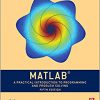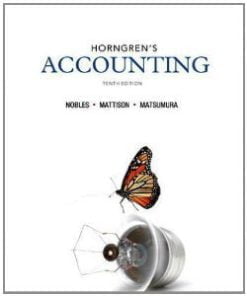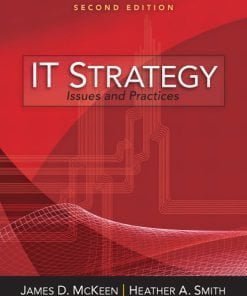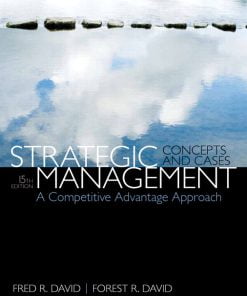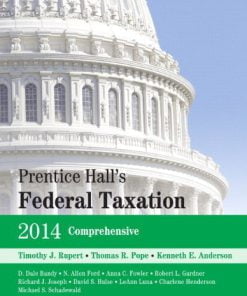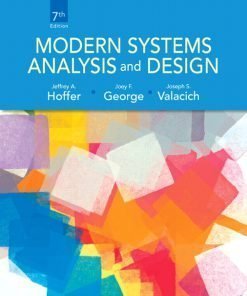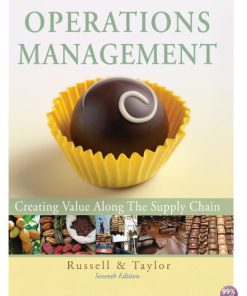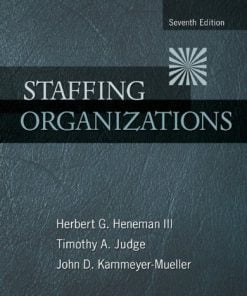Transport Phenomena Fundamentals 3rd Plawsky Solution Manual
$35.00 Original price was: $35.00.$26.50Current price is: $26.50.
Transport Phenomena Fundamentals 3rd Plawsky Solution Manual
Instant download Transport Phenomena Fundamentals 3rd Plawsky Solution Manual pdf docx epub after payment.
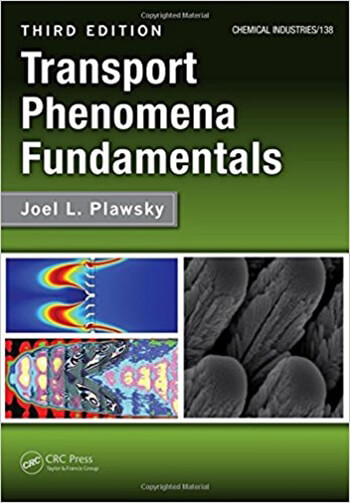
Product details:
- ISBN-10 : 1466555335
- ISBN-13 : 978-1466555334
- Author: Joel L. Plawsky
The third edition of Transport Phenomena Fundamentals continues with its streamlined approach to the subject of transport phenomena, based on a unified treatment of heat, mass, and momentum transport using a balance equation approach. The new edition makes more use of modern tools for working problems, such as COMSOL®, Maple®, and MATLAB®. It introduces new problems at the end of each chapter and sorts them by topic for ease of use. It also presents new concepts to expand the utility of the text beyond chemical engineering.
The text is divided into two parts, which can be used for teaching a two-term course. Part I covers the balance equation in the context of diffusive transport―momentum, energy, mass, and charge. Each chapter adds a term to the balance equation, highlighting that term’s effects on the physical behavior of the system and the underlying mathematical description. Chapters familiarize students with modeling and developing mathematical expressions based on the analysis of a control volume, the derivation of the governing differential equations, and the solution to those equations with appropriate boundary conditions.
Part II builds on the diffusive transport balance equation by introducing convective transport terms, focusing on partial, rather than ordinary, differential equations. The text describes paring down the microscopic equations to simplify the models and solve problems, and it introduces macroscopic versions of the balance equations for when the microscopic approach fails or is too cumbersome. The text discusses the momentum, Bernoulli, energy, and species continuity equations, including a brief description of how these equations are applied to heat exchangers, continuous contactors, and chemical reactors. The book also introduces the three fundamental transport coefficients: the friction factor, the heat transfer coefficient, and the mass transfer coefficient in the context of boundary layer theory. The final chapter covers the basics of radiative heat transfer, including concepts such as blackbodies, graybodies, radiation shields, and enclosures. The third edition incorporates many changes to the material and includes updated discussions and examples and more than 70 new homework problems.
Table of contents:
1 The Double-Decomposition Concept for Turbulent Transport in Porous Media
1.1 Introduction
1.2 Instantaneous Local Transport Equations
1.3 Time- and Volume-Averaging Procedures
1.4 Time-Averaged Transport Equations
1.5 The Double-Decomposition Concept
1.5.1 Basic Relationships
1.6 Turbulent Transport
1.6.1 Momentum Equation
1.7 Heat Transfer
1.7.1 Governing Equations
1.7.2 Turbulent Thermal Dispersion
1.7.3 Local Thermal Equilibrium Hypothesis
1.7.4 Macroscopic Buoyancy Effects
1.8 Mass Transfer
1.8.1 Mean and Turbulent Fields
1.8.2 Turbulent Mass Dispersion
1.9 Concluding Remarks
References
2 Heat Transfer in Bidisperse Porous Media
2.1 Introduction
2.2 Determination of Transport Properties
2.3 Two-Phase Flow and Boiling Heat Transfer
2.4 Dispersion
2.5 Two-Velocity Model
2.6 Two-Temperature Model
2.7 Forced Convection in A Channel Between Plane Parallel Walls
2.7.1 Uniform Temperature Boundaries: Theory
2.7.2 Uniform Flux Boundaries: Theory
2.7.3 Uniform Temperature Boundaries: Results
2.7.4 Uniform Flux Boundaries: Results
2.7.5 Conjugate Problem
2.7.6 Thermal Development
2.8 Conclusions
References
3 From Continuum To Porous-Continuum: The Visual Resolution Impact On Modeling Natural Convection in Heterogeneous Media
3.1 Introduction
3.2 Horizontal Heating
3.2.1 Continuum Equations
3.2.2 Porous-Continuum Equations
3.2.3 Heat Transfer Comparison Parameters
3.2.4 Results
3.2.5 Internal Structure Effect
3.3 Heat-Generating Blocks
3.3.1 Mathematical Modeling
3.3.2 Heat Transfer Comparison Parameters
3.3.3 Results
3.4 Conclusion
References
4 in Integral Transforms for Natural Convection in Cavities Filled With Porous Media
4.1 Introduction
4.2 Two-Dimensional Problem
4.3 Three-Dimensional Problem
4.4 Results and Discussion
4.5 Conclusions
References
5 A Porous Medium Approach for The Thermal Analysis of Heat Transfer Devices
5.1 Introduction
5.2 Thermal Analysis of Microchannel Heat Sinks
5.2.1 High-Aspect-Ratio Microchannels
5.2.2 Low-Aspect-Ratio Microchannels
5.3 Thermal Analysis of Internally Finned Tubes
5.3.1 Mathematical Formulation and theoretical Solutions
5.3.2 Velocity and Temperature Distributions
5.3.3 Optimizationof thermal Performance
5.3.4 Comments On The Averaging Direction
5.4 Conclusions
References
6 Local Thermal Non-Equilibrium in Porous Medium Convection
6.1 Introduction
6.2 Governing Equations
6.3 Conditions for the Validity of LTE
6.4 Free Convection Boundary Layers
6.4.1 General Formulation
6.4.2 Results for Stagnation Point Flow
6.4.3 Results for A Vertical Flat Plate
6.4.4 General Comments
6.5 Forced Convection Past A Hot Circular Cylinder
6.6 Stability of Free Convection
6.7 Conclusions
References
7 Three-Dimensional Numerical Models for Periodically Fully-Developed Heat and Fluid Flows Within Porous Media
7.1 Introduction
7.2 Three-Dimensional Numerical Model for Isotropic Porous Media
7.2.1 Numerical Model
7.2.2 Governing Equations and Periodic Boundary Conditions
7.2.3 Method of Computation
7.2.4 Macroscopic Pressure Gradient and Permeability
7.3 Quasi-Three-Dimensional Numerical Model for Anisotropic Porous Media
7.3.1 Periodic Thermal Boundary Conditions
7.3.2 Quasi-Three-Dimensional Solution Procedure for Anisotropic Arrays of Infinitely Long Cylinders
7.3.3 Effect of Cross Flow Angle On the Euler and Nusselt Numbers
7.3.4 Effect of Yaw Angle On the Euler and Nusselt Numbers
7.4 Large Eddy Simulation of Turbulent Flow in Porous Media
7.4.1 Large Eddy Simulation and Numerical Model
7.4.2 Velocity Fluctuations and Turbulent Kinetic Energy
7.4.3 Macroscopic Pressure Gradient in Turbulent Flow
7.5 Conclusions
References
8 Entropy Generation in Porous Media
8.1 Introduction
8.2 A Short History of the Second Law of thermodynamics
8.3 Governing Equations
8.3.1 Continuity Equation
8.3.2 Momentum Balance Equation
8.3.3 Energy Equation
8.3.4 Entropy Generation
8.4 Entropy Generation in A Porous Cavity and Channel
8.4.1 Entropy Generation in A Porous Cavity
8.4.2 Entropy Generation in A Porous Channel
8.5 Conclusions
References
9 Thermodiffusion in Porous Media
9.1 Introduction
9.2 Literature Review
9.2.1 Measurement Techniques of the Soret Coefficient
9.2.2 Mathematical and Numerical Techniques
9.3 Fundamental Equations of thermodiffusion
9.3.1 Haase Model
9.3.2 Kempers Model
9.3.3 Firoozabadi Model
9.4 Fundamental Equations in Porous Media
9.5 Numerical Solution Technique
9.6 Mesh Sensitivity Analysis
9.7 Results and Discussion
9.7.1 Comparison of Molecular and thermodiffusion Coefficients for Water Alcohol Mixtures
9.7.2 Calculation of Molecular and thermodiffusion Coefficients for Hydrocarbon Mixtures
9.7.3 Convection in A Square Cavity
9.7.4 Convection in A Rectangular Cavity
9.8 Conclusions
References
10 Effect of Vibration On The Onset of Double-Diffusive Convection in Porous Media
10.1 Introduction
10.2 Mathematical Formulation
10.2.1 Direct Formulation
10.2.2 Time-Averaged Formulation
10.2.3 Scale Analysis Method
10.2.4 Time-Averaged System of Equations
10.3 Linear Stability Analysis
10.3.1 Infinite Horizontal Porous Layer
10.3.2 Limiting Case of the Long-Wave Mode
10.3.3 Convective Instability Under Static Gravity (No Vibration)
10.4 Comparison of the Results With Fluid Media
People also search:
Transport Phenomena Fundamentals 3rd
Transport Phenomena Fundamentals 3rd pdf
Transport Phenomena Fundamentals
transport phenomena syllabus
types of transport phenomena
transport phenomena examples
Related products
Solution Manual
Solution Manual
Prentice Hall’s Federal Taxation 2014 Comprehensive Rupert 27th Edition Solutions Manual
Solution Manual
Solution Manual


